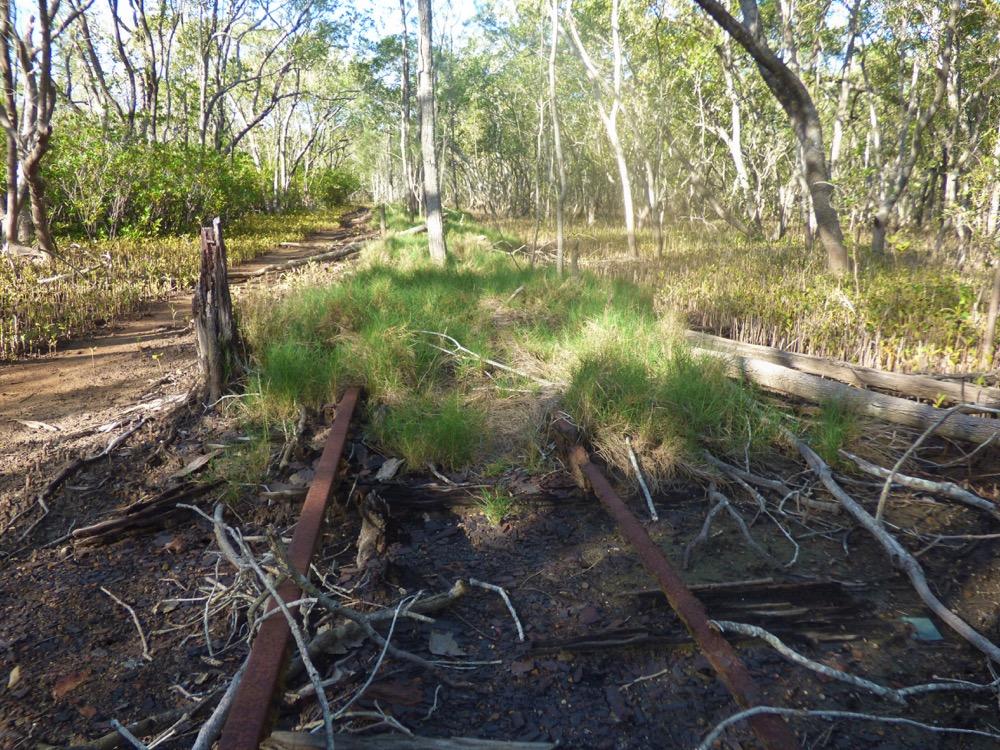Native Foresters surveyed the construction corridor of a proposed boardwalk that traverses the Bli Bli Environmental Park and the Descendants of the Australian South Sea Islanders (DASSI) Cultural Land, at the end of Whistler Street, Bli Bli.
The survey habitats included remnant tidal wetland associations growing below highest astronomical tide. These saline sedgelands and grasslands, mangrove communities and Swamp she-oak woodlands allow the movement of fauna along both tidal and non-tidal wetland areas and contain core habitat for conservation-significant species, including the Vulnerable-listed Water mouse (Xeromys myoides).
In addition to its ecological value, the site, including the old cane locomotive track, pylons and footings of old water structures and dwellings, and vegetation is of significant cultural value to the DASSI people, to whom it is known as ‘the old place’.
The original 2017 alignment over the locomotive track was subsequently revised in 2019 and moved slightly northwards, to exploit the unvegetated mud flats and existing gaps in the vegetation immediately adjacent to the locomotive track. This resulted in significantly less clearing of marine plants and avoided direct impacts to sensitive fauna habitat and areas of local cultural heritage.
The intent of the project was to educate and raise community awareness about the cultural, historical and ecological significance of the site through the use of interpretive signage and by facilitated access along a boardwalk.











